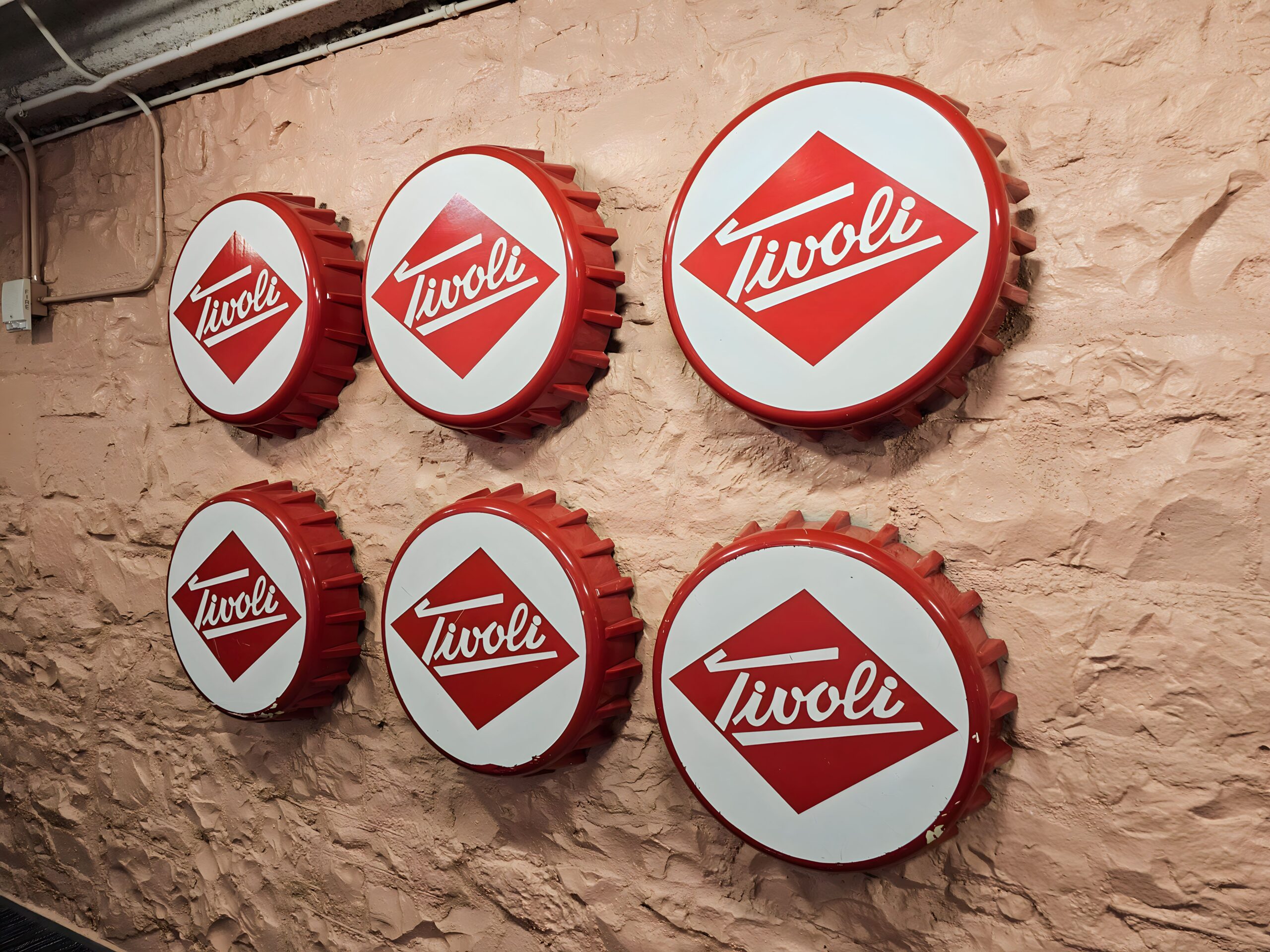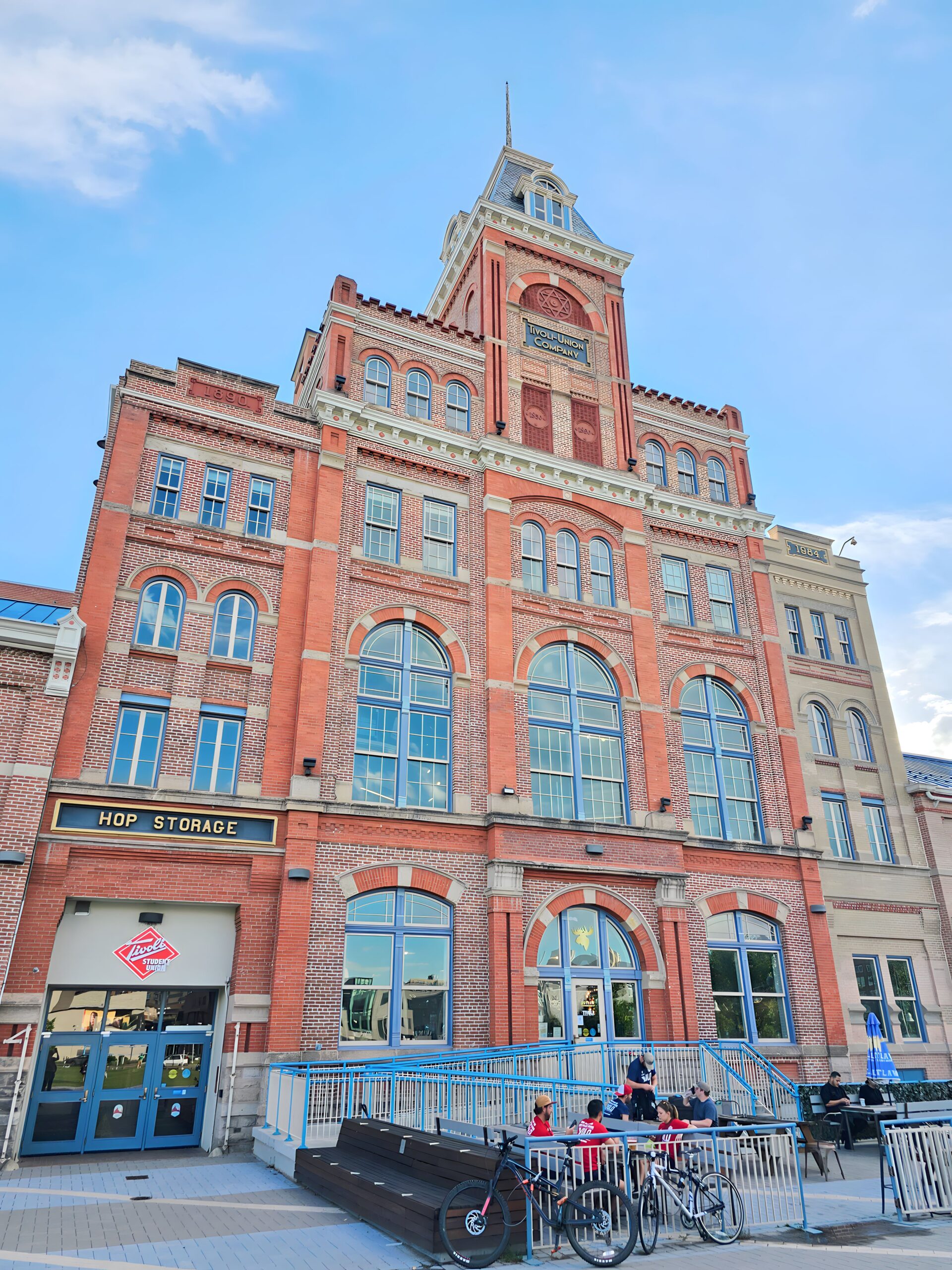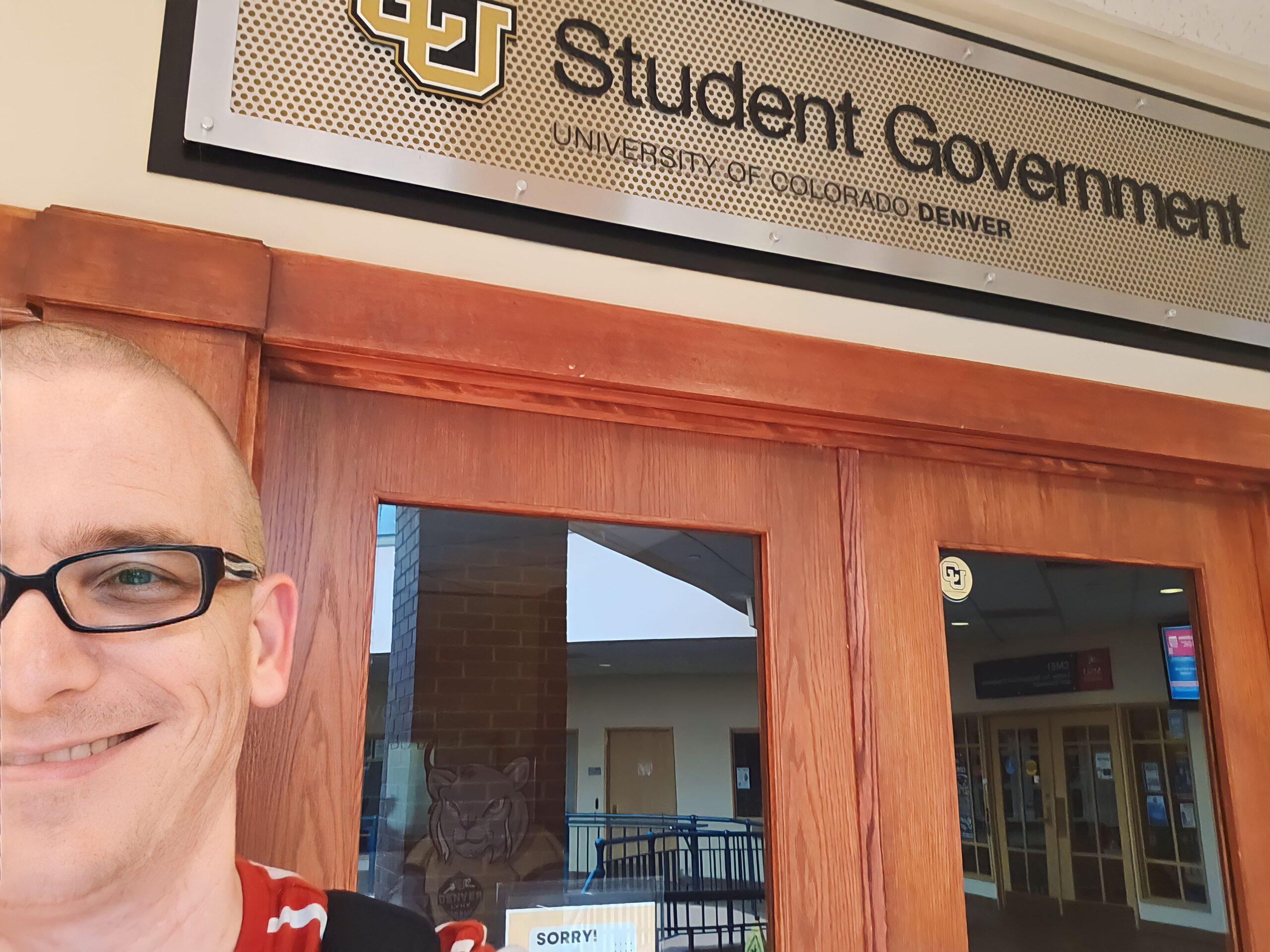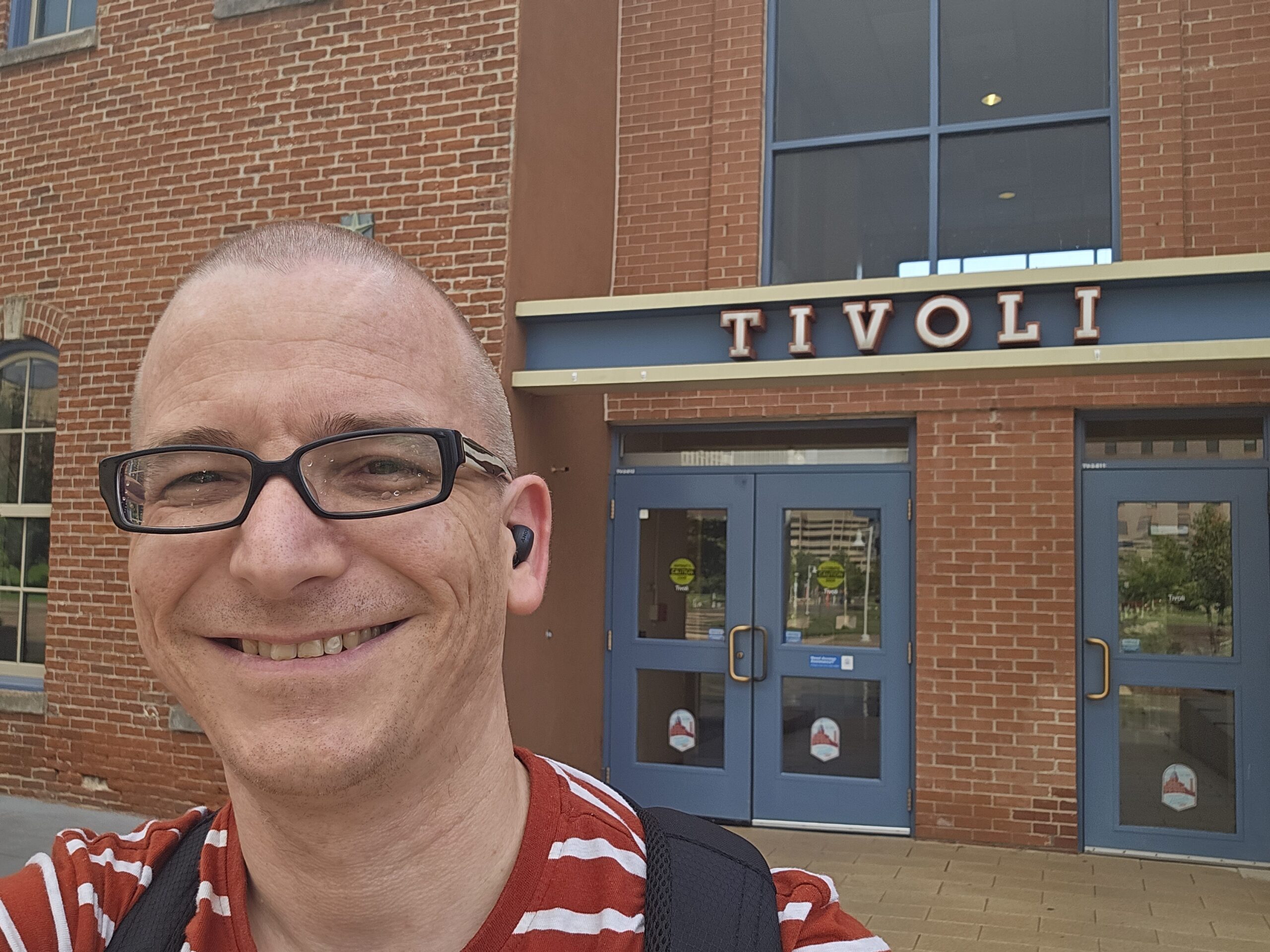I worry sometimes that for all the work on widening access, towns and cities with multiple universities don’t tend to promote the bridging social capital benefits of mixing between their students.
The intense (and often unnecessary) siloing and competition between universities can also be pretty inefficient when you think about it.
There’s three prominent higher education institutions where I am this week in Aurora in Denver (Colorado) for InstructureCon – the Community College of Denver, the Metropolitan State University of Denver, and the University of Colorado Denver – that between them educate about 50,000 students.
The Auraria Higher Education Center is a shared state entity whose role is to provide and manage shared services, facilities, and property by the three separate and distinct higher education colleges.
And it supports an extraordinary student building.

Trouble brewing
The Tivoli Student Union, originally part of the Colorado Brewery, was built in 1870 by German-born Mortz Sigi. Renamed the Tivoli Brewing Company after the Tivoli Gardens in Copenhagen in 1901, the building was closely tied to the brewing industry until the 1960s – and in the prohibition period it survived by producing a cereal beer named “Dash.”
It was forced to close down by 1966 due to business struggles following a worker’s strike. By 1973 it had gained recognition as a historical site and was placed on the US National Register of Historic Places, which ensured the preservation of the building and significant brewing equipment. It was then purchased by the Denver Urban Renewal Authority using federal funds, and ownership was then transferred to the Auraria Higher Education Center.
At first private developers were contracted to restore the buildings, which were united under a three-story atrium for commercial purposes. But in 1991 Auraria students across the universities got together and voted to re-purchase and re-develop the lease on the Tivoli for educational use – leading to its opening as the Tivoli Student Union in 1994.
Today, following a two-year renovation, the Tivoli functions as a student union/retail centre and it’s pretty much the central hub of the campus.

Getting involved in government
The building is home to all three “student governments” of the three universities (the representative organisations) – and there’s fascinating things to note. At MSU Denver, the byline is “the student advocacy council”, reinforcing their representative purpose – and one of the first things you come across is their long-term representative goals:
- To eliminate food insecurity among students of MSU Denver, so that education is the sole focus for students.
- To develop more affordable housing options for MSU Denver students, so that students may be near the campus community/resources and reduce the need for commuting.
- To champion undocumented students so that barriers to education may be removed.
- To cooperate with MSU Denver in developing the strategic plan, so that student voice is considered and utilized.
- To collaborate with C2Hub, Student Affairs, and graduate school department leaders to facilitate financial aid and scholarship opportunities for graduate students, who otherwise do not receive assistance outside of loans to pay for their education.
In the UK we often tend to talk about representation in the abstract (we’re here to represent you) or frame representative goals as one year things attached to officers – but at MSU it’s clear what the SG is working for long-term.
Meanwhile over at UCD, the student government is keen to emphasise both rights and that shared government and governance is key to its purpose:
SGA safeguards the rights and interests of all students while recognizing and respecting the strength and diversity of each individual student. Here, we put equity, diversity, and inclusion at the forefront of what we do. As the collective voice of the student body, we are tasked with serving and leading our students with honesty, integrity, and respect. The CU Denver SGA promises accountability to the student body by modelling effective and responsive shared governance that enriches the quality of student life.

As well as a host of committees and structures for students to get involved with, there’s a headline access and participation project which sees the SG partnering with their university’s Alumni Engagement office and the Careers Center. It’s worth looking at for SUs in England feeding in on their university’s APP:
Success Looks Like Me: This was started by the SGA College Council in 2020. SLLM connects CU Denver students from underrepresented populations to visualize different paths to success, hearing from accomplished CU Denver Alumni to enhance their student experience, help them understand what brought them to college, how they can realize their potential-receiving honest advice from someone who has walked in their shoes.
And one of the key roles that the SG negotiated a while ago as part of the equivalent of their SU/Uni partnership agreement was on university costs for students:
“Student Government meets with and reviews offices that receive student fees to operate their programs and services. This process takes place each fall. These meetings are open to the public.
Quieten down
There are some interesting facilities in the building. As well as places to study, eat and get coffee (and a Taphouse selling beer still brewed on the premises) there’s a Credit Union, a lactation room for new mothers, and several reflection rooms that take students away from the noise of the campus – particularly important given the growth in neurodiverse enrolments.
There’s also a Book Buyback office which gets cash into students’ pockets (stock is stored and sold on later, a bit like a book CEX), a dedicated LGBTQ Student Resource Center and an office for the student-led Auraria Sustainable Campus Program.
There are also dedicated spaces for a major peer-mentoring programme, student media and both a food pantry and a thrift shop. Crucially, student focussed staff are in there too – so the Dean of Students at MSU has their office next door to the SG. It’s an important way to ensure that senior managers are in touch with students.

Belonging and community
Perhaps most importantly, it’s not the services or facilities that matter the most here – it’s community. The Tivoli has served as a communal focal point for both the campus and the wider Aurora community for years, hosting a diverse range of events from Colorado Avalanche playoff watch parties to intimate weddings.
Annual events held at the Tivoli are of particular importance – they include CU Denver’s commencement, a huge and shared Cultural Diversity Festival, and a massive first-in-family-whichever-uni-you’re-at student dinner. These events bring together families, celebrate student diversity, and foster a sense of shared pride in the college experience.
Jazmin Teran Balbuena, a student SG event planner, emphasises the critical role of the Tivoli in planning and conducting events that allow students to experience diverse cultures – bringing that “you’ll meet lots of different people” thing to life:
Being able to plan and bring together students to experience different cultures was very cool and important to me.
And the Tivoli is still pretty much student-run:
They help determine what happens next [for the Tivoli]. They have an opportunity to work with the people who administrate the building to make sure we provide things that students will value.
As the UK’s town and city centres continue to deteriorate as retail moves out, maybe it’s time for SUs from across towns and cities to advocate for something similar.




















I can’t see this working very well in many UK cities/towns, the older ‘red brick’ Universities will see it, possibly rightly so, as a devaluing thing. Where I am we have a Russell Group red brick, and a former poly, with 4 or 5 more former poly’s in a 30 mile radius. The red brick views the poly’s not as direct competition, but as potential money pits, given their overseas expansions that have gone badly, one has sold a lot of it’s former faculties, for redevelopment, just to bring enough money in to stop it’s collapse, and the red bricks… Read more »